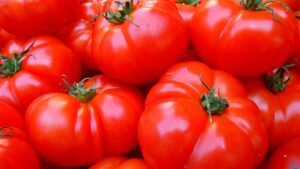Tomatoes aren’t a small crop globally, and that is no different in the EU. In fact, EU farmers alone produce nearly 17 million metric tons of the fruit each year, according to Hazera. The COVID-19 pandemic played an important part in driving the thriving market. In 2020, fresh tomato global retail sales rose 17.6%, as people had to eat in their homes.
As the tomato industry continues to boom, Alejandro Szechtman, portfolio marketing director tomato at Hazera, highlights the opportunities and challenges that currently face the sector.
Consumer Tastes Are Changing
The range of options available directly impacts the popularity of tomatoes, according to Szechtman.
“Right now, we see rising demand for convenient snack tomatoes. Smaller tomatoes require more harvesting labor, which can be a challenge given today’s tough economic climate and tight labor market,” he explained.
Consumers are now moving towards ‘buying local’ with the environment in mind. While Hazera is now able to grow tomatoes during longer periods throughout the year, it hasn’t always been easy to produce Mediterranean-quality fruits in northern Europe. Hazera will continue to work with exporters to create varieties that last longer during transport.
The Digitalized Solution
With the decline of manual labor in the tomato sector, farmers are turning to automated, digitalized solutions for easier and faster production. This change results in energy, cost and resource efficiencies, a great benefit for an industry where profits can be unpredictable.
“Automation is therefore an exciting area for investment, and we at Hazera are always working on R&D to make the dream solutions of the future a reality for the growers who need them,” added Szechtman.
Facing Climate Change Head On
Hotter climates negatively impact plant growth and increase the risk of disease, hindering the ability to reach the growing global demand.
“Hazera is working on solutions to help farmers prevent and overcome the effects of climate change. Not only are we breeding more adaptable varieties with higher drought and heat tolerance, but we’re also collaborating with growers to design and implement technologies to save water during irrigation,” concluded Szechtman.
Read More:
Researchers Celebrate Milestone Decision for Purple GM Tomatoes
Improved Tomato Varieties Impact Global Food Security













